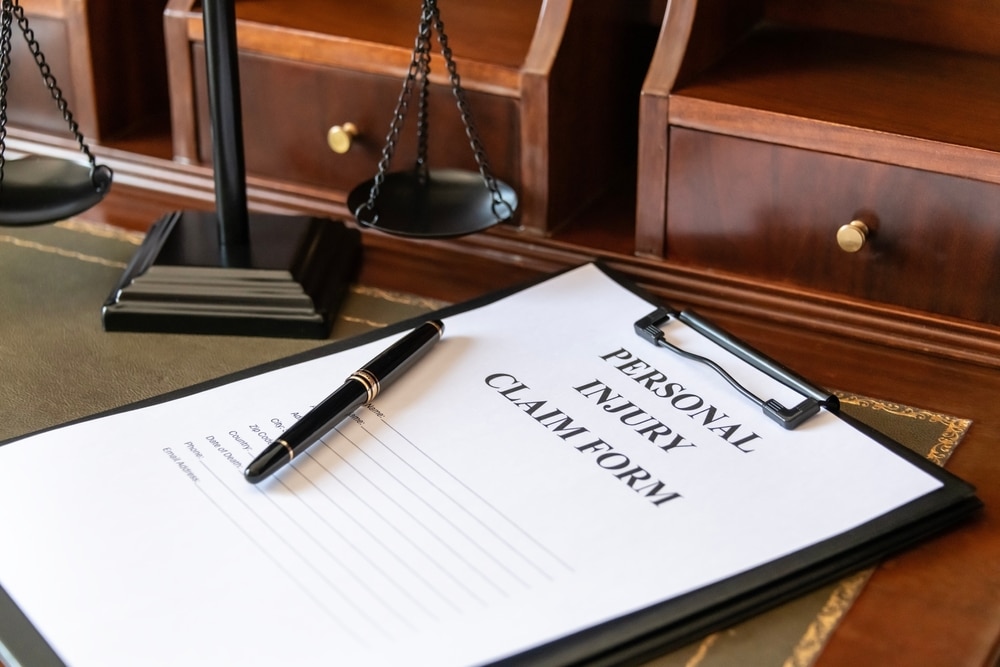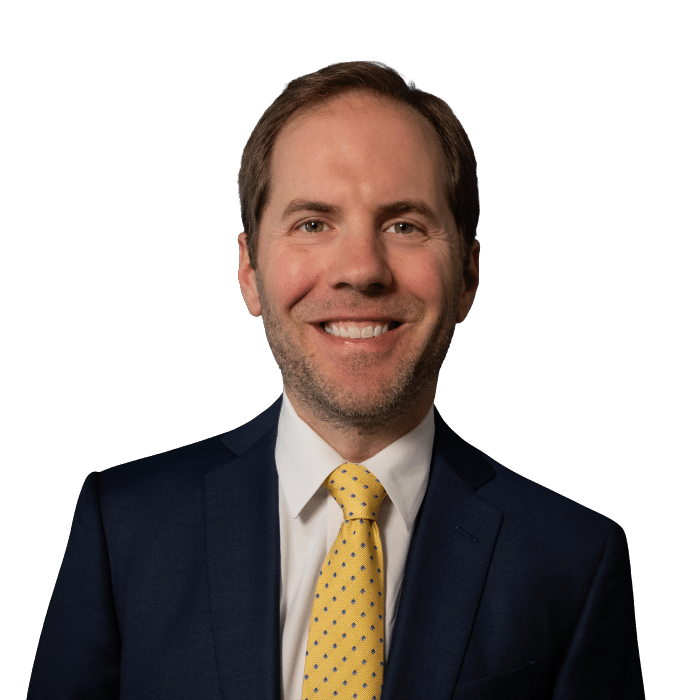When you’re recovering from an injury, insurance companies start building their defense immediately. They assign adjusters, review reports, and calculate the lowest offer they think you’ll accept. Meanwhile, you’re managing pain, medical appointments, and mounting bills. A personal injury lawyer levels the playing field by taking over evidence preservation, insurer communications, and damage documentation so you can focus on your recovery.
Key Takeaways for How a Personal Injury Lawyer Can Help Your Case
- Personal injury lawyers identify all available insurance coverage, including UM/UIM and MedPay benefits that insurers may not highlight.
- Attorneys send preservation letters immediately to prevent the destruction of surveillance footage, electronic data, and maintenance records.
- Legal representation can increase net recovery through strategic lien negotiation and comprehensive case building.
- The two-year statute of limitations in Oklahoma imposes strict deadlines, and the 51% comparative negligence rule impacts your ability to recover damages—two key issues attorneys monitor closely.
- Contingency fee arrangements mean you pay nothing upfront; we advance case expenses, which are repaid from any recovery; if there’s no recovery, you owe no attorney fees or case expenses.
Why Hiring a Personal Injury Attorney Benefits Your Case

The value a personal injury lawyer adds goes beyond simple negotiation. Insurance companies employ teams working to minimize your recovery. They know unrepresented claimants often accept settlements worth fractions of actual damages.
Your attorney creates a comprehensive strategy that addresses every aspect of your claim—identifying liable parties, discovering insurance policies, and building evidence before it disappears.
The benefits of hiring a personal injury attorney in Oklahoma include:
- Immediate evidence preservation before surveillance footage overwrites or witnesses forget details
- Protection from recorded statements that damage your claim
- Coordination with medical providers to document injuries properly
- Discovery of insurance coverage you didn’t know existed
- Strategic lien negotiation that increases your net recovery
Most importantly, attorneys handle the legal complexities while you focus on healing. They manage deadlines, court filings, and deal with insurance companies overall; tasks that would otherwise consume your recovery time.
From Day One: What Your Lawyer Handles
Truck accident and personal injury cases are won or lost in the early stages. Evidence disappears, witnesses move on, and insurers move fast to protect themselves. That’s why your lawyer begins work right away: developing a strategy, preserving proof, and building the foundation of a strong claim before key opportunities slip away.
Case Intake and Strategy
Your first attorney meeting establishes the foundation for your entire case. The lawyer evaluates liability, insurance coverage, and potential damages while creating a timeline for critical actions.
Evidence Plan and Preservation Letters
Time destroys evidence every day after an accident. Security cameras often overwrite footage within days or weeks. Trucking companies can destroy electronic logs after six months under 49 CFR 395.8. Skid marks fade and vehicle damage gets repaired.
Your lawyer can immediately send preservation letters that put all potentially responsible parties on notice to preserve relevant evidence, including surveillance footage, vehicle electronic data, maintenance records, driver logs, cell phone and GPS data, and internal incident reports.
Coordinating Medical Care and Records
How you document injuries directly impacts compensation. Attorneys work with medical providers, ensuring records accurately reflect injuries, treatment, and prognosis.
Your lawyer coordinates between providers, preventing treatment gaps that insurance companies exploit. They ensure diagnostic tests get ordered and specialist referrals get made. This medical coordination builds your damage claim foundation.
Communicating With Insurers
Insurance adjusters contact injury victims quickly, often within hours of accidents. They seek recorded statements while you’re medicated, traumatized, or unaware of the extent of your injury. These statements become weapons against your claim later.
Your attorney becomes the sole insurance contact, protecting you from making mistakes. They handle all communications professionally while preserving your claim value. This protection prevents accidental admissions that reduce or eliminate your recovery.
Proving Liability Under Oklahoma Law
Oklahoma follows modified comparative negligence under 23 O.S. §13. You can recover only if you’re less than 51% at fault; any award is reduced by your percentage of fault.
For example, if a jury awards $100,000 but finds you 30% at fault, you would receive $70,000. At 51% or more fault, you receive nothing. Insurance companies aggressively push fault onto victims.
Common evidence sources your lawyer investigates include:
- Photographs of the accident scene, vehicles, and injuries as they evolve
- Black box data from vehicles showing speed, braking, and mechanical information
- Security and traffic camera footage from surrounding businesses and intersections
- Witness statements taken while memories remain fresh
- Expert accident reconstruction when liability is disputed
Your attorney knows which evidence matters most and presents it strategically to minimize fault assignment.
Building Damages the Right Way
For most injury victims, the greatest concern isn’t the legal process—it’s how to cover today’s bills while worrying about tomorrow’s needs. That’s why damages play such an important role. A lawyer ensures every cost connected to your recovery, from medical treatment to missed work and future limitations, is carefully calculated and supported with evidence.
Economic Damages
Calculating economic damages requires more than adding medical bills. Your attorney documents all financial losses stemming from your injury. This includes past medical expenses, future treatment costs, lost wages, and diminished earning capacity.
Medical bills often represent just the beginning. Life care planners project future surgeries, therapy, medications, and equipment needs. Vocational experts assess how injuries impact career trajectory and lifetime earnings.
Economic damage documentation includes:
- All medical bills, including ambulance, emergency, surgical, and rehabilitation costs
- Prescription costs, medical equipment, and home modifications
- Lost wages with employer verification and tax returns
- Future earning capacity based on education, skills, and limitations
- Out-of-pocket expenses for travel, help, and injury-related needs
Non-Economic Damages
Pain, suffering, and lost life enjoyment often exceed economic damages in serious injury cases. However, these damages require careful documentation to achieve full value. Insurance companies try to minimize subjective damages.
Your daily symptom journal becomes crucial evidence. Recording pain levels, limitations, and emotional impacts creates proof of suffering. Family statements about personality changes and activity losses strengthen your claim.
Your attorney may also work with:
- Treating physicians who document pain and functional limitations
- Psychologists or psychiatrists for emotional trauma and PTSD
- Rehabilitation specialists showing permanent restrictions
- Life care planners demonstrating long-term impacts
Insurance Coverage You Might Miss Without a Lawyer
Most accident victims know about the at-fault party’s liability insurance. However, multiple additional coverage sources often exist that attorneys investigate to ensure all available compensation is pursued.
Uninsured/Underinsured Motorist (UM/UIM) coverage protects you when at-fault parties lack adequate insurance. The Oklahoma Insurance Department requires insurers to offer this coverage, though you can reject it in writing. Many people have UM/UIM without realizing it.
Additional coverage sources include:
- Medical Payments (MedPay) coverage, which pays regardless of fault
- Umbrella policies providing excess liability limits
- Commercial policies when injuries occur during business activities
- Homeowner’s insurance for dog bites and premises injuries
- Multiple policies from different defendants in complex cases
Your lawyer also understands policy stacking rules and coverage triggers. They improve recovery outcomes by properly sequencing claims and avoiding coverage denials. The Oklahoma Insurance Resource Guide provides basic coverage information, but attorneys know how to navigate complex policy language.
Medical Liens, Subrogation, and Benefit Coordination
Medical providers and insurance plans can claim portions of your settlement through liens and subrogation rights. Without legal help, these claims can consume most of your recovery. Attorneys negotiate these obligations to increase your net compensation.
Medical liens attach automatically to your recovery under Oklahoma law. Health insurance plans assert reimbursement rights following different rules.
Common lien types your attorney addresses include:
- Hospital liens for emergency and surgical care
- ERISA plan liens from employer-sponsored health insurance
- Medicare liens with specific Secondary Payer rules
- Medicaid/SoonerCare claims with statutory limitations
- TRICARE and VA benefit coordination for military families
Skilled attorneys often reduce these obligations significantly through statutory protections, common fund doctrine, and strategic negotiation. They work to ensure medical providers get paid while seeking the best possible net recovery for you.
Negotiating With Insurance and Preparing for Litigation
Insurance negotiation involves more than arguing about dollars. Your attorney prepares comprehensive demand packages documenting liability, damages, and coverage. Professional negotiations consider venue, jury verdicts, and litigation costs. They understand when to accept reasonable offers and when to proceed toward trial.
The litigation preparation process includes:
- Filing suit before the statute of limitations expires
- Conducting discovery to uncover hidden evidence
- Deposing witnesses and corporate representatives
- Retaining qualified experts for complex issues
- Maintaining credible trial readiness for leverage
Oklahoma personal injury attorneys work on contingency fees, meaning you pay nothing upfront. Attorney fees come from your recovery only if your case is successful. You pay no attorney fees unless we obtain compensation. We advance case expenses and are reimbursed from any recovery.
Oklahoma Deadlines You Must Not Miss
Oklahoma law creates strict deadlines that cannot be extended. Missing deadlines eliminates your right to compensation regardless of injury severity.
The statute of limitations under 12 O.S. §95 gives you two years to file suit. Government claims under 51 O.S. §156 require written notice within one year for:
- Accidents involving government vehicles or employees
- Dangerous conditions on roads maintained by cities or counties
- Injuries at government buildings or properties
- Police or emergency vehicle accidents
Your lawyer ensures all deadlines are met while building your strongest case.
What to Do Once You’re Home or Stable
Your actions during recovery impact your case value. Following these guidelines protects your interests while you heal.
Start a daily journal to record pain levels, limitations, and emotional impacts. Note activities you cannot perform and the help you need from others.
Practical steps that protect your case:
- Save every medical bill, receipt, and insurance explanation of benefits
- Photograph visible injuries weekly as they heal
- Follow all medical advice and attend appointments
- Direct all insurance calls to your attorney
Avoid social media posts about your accident, injuries, or activities. Insurance investigators search profiles for evidence they can use against you.
FAQ: How a Personal Injury Lawyer Can Help Your Case
Do I need a lawyer if the insurance company accepts fault?
Yes, accepting fault doesn’t mean the insurer will pay fair compensation. They still minimize your damages, dispute medical treatment, and push quick settlements. Attorneys ensure you receive full compensation for all damages, not just obvious medical bills. They also discover additional insurance coverage and negotiate liens to increase your net recovery.
How do contingency fees and case expenses work in Oklahoma?
Personal injury attorneys in Oklahoma generally work on a contingency fee basis, meaning you don’t pay attorney fees unless money is recovered for you. Contingency fees often range from 33% to 40% of the recovery. Some firms also advance case expenses such as filing fees, expert witness costs, and medical record requests, with repayment coming from the settlement or verdict. Policies differ, however—while certain firms absorb these costs if the case is unsuccessful, others may require clients to reimburse them regardless of outcome.
What if I’m partly at fault under the 51% rule?
Oklahoma’s law under 23 O.S. §13 allows recovery if you’re less than 51% at fault. Your damages are reduced by your fault percentage. Attorneys work to minimize fault assignment through strategic evidence presentation.
How long do personal injury cases take?
Case timelines vary based on injury severity and liability disputes. Minor injury claims with clear liability might settle within 3-6 months. Serious injuries often take 12-24 months. Complex cases may require 2-3 years. Your attorney provides realistic timelines based on your circumstances.
What should I bring to my consultation?
Bring available documents, including police reports, insurance information, medical records, and bills. Include photographs, witness contacts, and wage loss documentation. Don’t worry if you lack some documents—attorneys obtain records through legal channels.
What if Medicare or Medicaid paid my bills?
Medicare and Medicaid have reimbursement rights from settlements. However, these programs follow specific procedures with statutory limitations. Attorneys understand federal Medicare Secondary Payer rules and state Medicaid regulations, negotiating these claims to maximize your net recovery.
What if the at-fault driver has no insurance?
Uninsured motorist (UM) coverage from your own policy provides protection. This coverage pays when at-fault drivers lack insurance or in hit-and-run cases. Your attorney searches for all available UM policies, including those from household members. They also investigate the at-fault party’s assets and explore whether other parties share liability.
Can a lawyer help with property damage and rental cars?
Yes, attorneys often assist with vehicle damage claims and transportation. They ensure proper valuation of total losses and negotiate repairs. Many lawyers help arrange rentals and coordinate property settlements, preventing insurance companies from leveraging property damage against injury compensation.
How does a personal injury lawyer in Oklahoma add value beyond settlement negotiation?
Attorneys add value through strategic case building, not just negotiation. They preserve disappearing evidence, identify all insurance coverage, coordinate medical care, and protect you from insurance tactics. Personal injury lawyers handle complex legal deadlines, negotiate medical liens, and prepare cases for trial when necessary. This comprehensive representation often results in higher net recovery even after fees.
Should I hire a lawyer for minor injuries?
Even minor injuries benefit from legal consultation. Some injuries worsen over time or have hidden complications. Insurance companies may push for quick settlements before you know the full damages. Most attorneys provide free consultations to evaluate whether representation would benefit your situation.
Getting the Legal Help You Need

Recovering from injuries is challenging enough without trying to battle insurance companies alone. How a personal injury lawyer can help your case depends on preserving evidence, navigating complex laws, and building comprehensive damages. Attorneys level the playing field against insurance companies focused on minimizing recovery.
Carr & Carr Injury Attorneys has helped injured Oklahomans since 1973. We advance all case expenses and charge attorney fees only upon successful recovery. If we don’t win, you owe nothing.
Contact our Oklahoma City office at (405) 691-1600 or our Tulsa office at (918) 747-1000 for a free consultation. We also serve clients from Springdale, Arkansas. If injuries prevent travel, we’ll meet you at home or in the hospital. Call today to protect your rights and pursue full and fair compensation.





